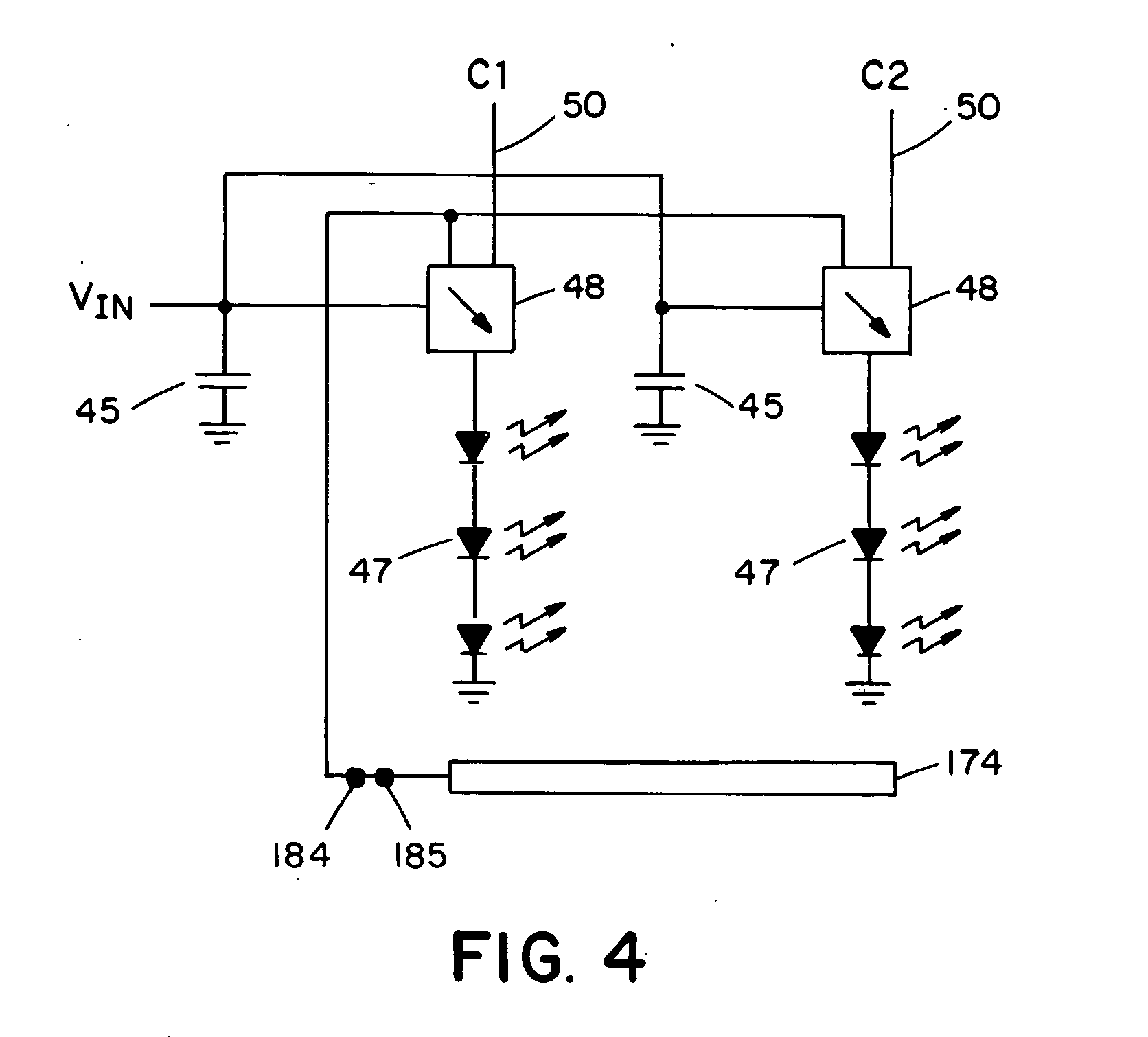Skin tanning and light therapy incorporating light emitting diodes
a technology of light-emitting diodes and skin tanning, which is applied in the field of skin tanning and light-emitting diodes, can solve the problems of increasing the visibility of skin lines and wrinkles, indoor tanning does not implement systems, and the quality of ultra-violet light exposure by the sun is not easy to control, so as to achieve the effect of improving performance and prolonging the life of leds
- Summary
- Abstract
- Description
- Claims
- Application Information
AI Technical Summary
Benefits of technology
Problems solved by technology
Method used
Image
Examples
Embodiment Construction
[0023] The present invention incorporates the use of light emitting diodes, commonly referred to as LEDs, into an indoor-tanning device that optionally includes other sources of therapeutic electromagnetic radiation. UVA LEDs are preferred. Particularly preferred UVA LEDs include those that emit at least about 90% UVA wavelengths, preferably at least about 95% or more UVA wavelengths. In one embodiment, the LED emits essentially only (e.g., at least about 99.99%) UVA. This high percentage of UVA light output is an improvement over previous lamp technologies previously available in indoor-tanning salons. The various LED manufacturers of the preferred LEDs are Cree Inc. (USA), Nichia (Japan), Toyoda Gosei (Japan), Crystal IS (USA—Aluminum Nitride AlN substrate) with Palo Alto Research Center (USA).
[0024] For providing general purpose light therapy it is desirable to include LEDs that have wavelengths in addition to UVA to provide for services other than or in addition to tanning. The...
PUM
 Login to View More
Login to View More Abstract
Description
Claims
Application Information
 Login to View More
Login to View More - R&D
- Intellectual Property
- Life Sciences
- Materials
- Tech Scout
- Unparalleled Data Quality
- Higher Quality Content
- 60% Fewer Hallucinations
Browse by: Latest US Patents, China's latest patents, Technical Efficacy Thesaurus, Application Domain, Technology Topic, Popular Technical Reports.
© 2025 PatSnap. All rights reserved.Legal|Privacy policy|Modern Slavery Act Transparency Statement|Sitemap|About US| Contact US: help@patsnap.com



